Evaluating Tower Crane Operator Competency
// June 25, 2025
In the high-stakes world of construction, few roles carry more responsibility than that of a tower crane operator. These skilled professionals control massive machinery that can lift several tons of materials hundreds of feet in the air—often directly above active work sites. The competency of these operators isn’t just a matter of productivity; it’s a critical component of workplace safety and regulatory compliance.
Why Competency Evaluation Matters
Evaluating tower crane operator competency is essential for preventing workplace incidents, ensuring regulatory compliance, and maintaining overall site safety.
When operators lack proper training or skills, the consequences can be catastrophic, resulting in serious injuries, fatalities, property damage, and project delays.
Beyond the immediate safety concerns, competency evaluation demonstrates due diligence by employers and supervisors, protecting them from potential liability while fostering a culture where safety is prioritized at every level. By implementing structured evaluation processes, organizations can identify knowledge gaps before they lead to incidents and develop targeted training programs to address specific areas of concern.
BC Crane Safety’s Worker Evaluation System
BC Crane Safety’s worker evaluation safety management system goes beyond basic compliance to provide a structured, proactive approach to identify and manage safety risks through established, industry-led occupational standards.
This comprehensive system includes the B.C. Crane Operator Qualification Core Program as a key tool to help employers assess crane operators’ skills and to ensure they meet rigorous safety benchmarks.
The system also incorporates BC Crane Safety Crane Operator Standards, which outline best practices for crane operation, as well as crane operator Assessment Templates to standardize evaluations and maintain consistency across the industry.
The B.C. Crane Operator Qualification Core Program is a key tool to help employers assess crane operators’ skills and to ensure they meet rigorous safety benchmarks.
The system also incorporates BC Crane Safety Crane Operator Standards, which outline best practices for crane operation, as well as crane operator Assessment Templates to standardize evaluations and maintain consistency across the industry.
By leveraging these resources, employers can demonstrate due diligence in proper training and crane operator qualifications while remaining compliant with Workers’ Compensation Act and Occupational Health and Safety requirements.
Essential Skill Areas for Evaluation
When evaluating tower crane operator competency, focus on these critical skill areas:
Safety Practices: Operators must demonstrate the ability to maintain a safe working environment, identify potential hazards, and implement appropriate safety protocols. This includes proper pre-operational inspections, understanding load charts and maintaining awareness of site-specific hazards.
Crane Operation: Technical proficiency in crane controls, understanding load dynamics and executing precise movements are fundamental skills that must be evaluated. Operators should demonstrate competency in various lifting scenarios and weather conditions.
Rigging and Load Chart: Proper rigging techniques are essential for safe lifts. Operators should understand rigging principles, be able to identify appropriate rigging gear for different loads and recognize when rigging is unsafe.
Communication: Effective communication with riggers, signal persons and other site personnel is crucial. Operators must demonstrate proficiency in hand signals, radio communication protocols and coordination with the lifting team.
Emergency Response: Operators must know how to respond to various emergency situations, including power failures, mechanical malfunctions, adverse weather conditions and medical emergencies on site.
Maintaining Evaluation Records
Thorough documentation of competency evaluations and training activities is not just good practice—it’s essential for demonstrating employer and supervisor due diligence. Records should include:
- Initial competency assessments
- Ongoing evaluation results
- Training completed and certifications obtained
- Remedial training provided to address identified gaps
- Incident reports and corrective actions taken
- Regular refresher training completion
These records provide valuable evidence of your commitment to safety and compliance should questions arise following an incident or during regulatory inspections.
WorkSafeBC’s Tower Crane Competency Evaluation Framework
Specifically for tower cranes, WorkSafeBC has developed a comprehensive framework for evaluating tower crane operator competency that helps employers and supervisors assess and document operator skills and development progress. This WorkSafeBC framework breaks down competency into three levels:
Level 1: Basic Competency (Requires Guidance)
Operators at this level require guidance and supervision, demonstrating basic understanding of safety procedures, regulations, and operational techniques.
Level 2: Developing Competency (Minimal Guidance)
These operators require minimal guidance, can apply safety measures independently, and demonstrate growing proficiency in crane operations.
Level 3: Competent (Independent)
These are fully competent (full scope) operators who can work independently, ensure compliance with all regulations, and handle complex operations without supervision.
The framework provides clear benchmarks for progression through these levels, allowing for consistent evaluation across different work environments and crane types.
For comprehensive guidance on implementing tower crane operator competency evaluations, review WorkSafeBC’s guide to Evaluating the Competency Level of a Tower Crane Operator.




